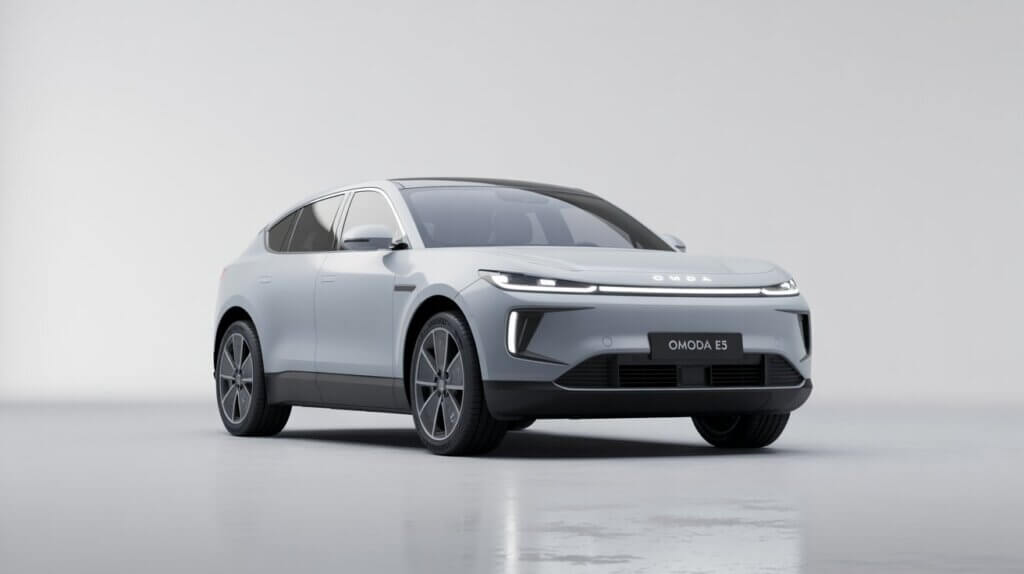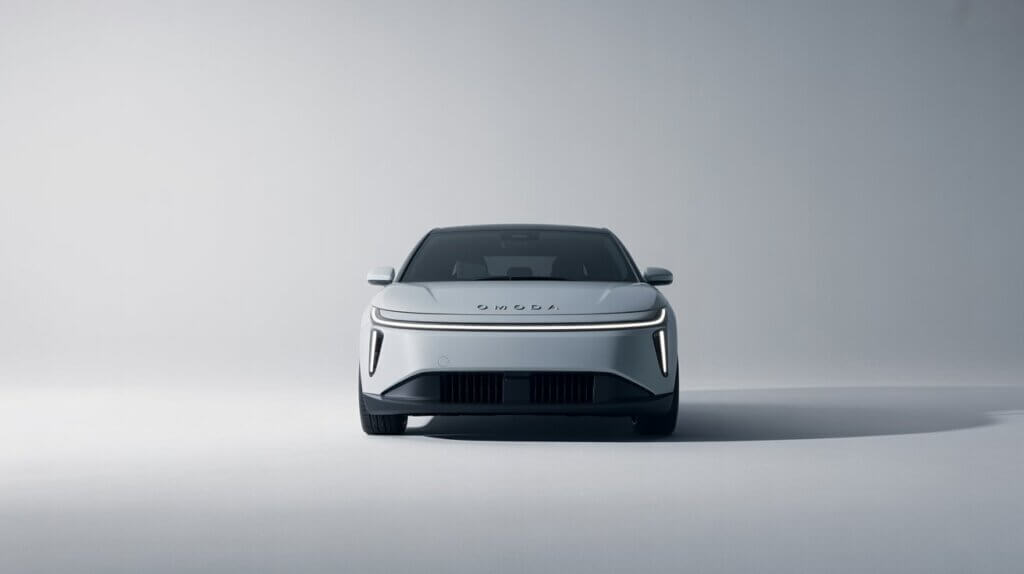As the electric vehicle (EV) market continues its rapid expansion, new contenders are emerging from every corner of the globe, vying for a slice of the emissions-free pie. Among the latest to arrive with significant fanfare is the Omoda E5, an all-electric SUV that promises stylish design, advanced features, and a compelling package for the discerning EV buyer. But beyond the marketing gloss, how does the Omoda E5 truly perform in the real world? We’ve put it through its paces to deliver an authoritative and accessible review, focusing on what matters most to everyday drivers: range, interior tech, and genuine efficiency.
Table of Contents
Range Reality: How Far Can the Omoda E5 EV Go?
The Omoda E5 is equipped with a 61 kWh Lithium Iron Phosphate (LFP) blade battery, a technology known for its safety and longevity. The official WLTP (Worldwide Harmonised Light Vehicle Test Procedure) combined range is stated at 257 miles (430 km). However, as any seasoned EV driver knows, official figures are often a best-case scenario.
In our real-world testing, the Omoda E5 demonstrated commendable, if not class-leading, efficiency. During mixed driving conditions, including city commutes and moderate highway speeds, we consistently observed a real-world range closer to 220-235 miles (350-375 km). This figure naturally fluctuates with driving style, external temperature, and terrain. For instance, cold weather significantly impacts battery performance, and during chillier winter days, expect the usable range to drop to around 180 miles.

One of the E5’s strengths lies in its energy consumption rate, often hovering around 3.5-3.8 miles/kWh in varied driving. This is a respectable figure for a vehicle of its size and power, demonstrating solid battery management. However, highway cruising at higher speeds (above 100 km/h) will see this efficiency drop, as with any EV.
Charging the Omoda E5 is facilitated by both AC and DC capabilities. It supports up to 11 kW AC charging (though some reports suggest 9.9 kW three-phase charging, which is a bit unique), meaning a full charge at home on a suitable wallbox could take around 7-8 hours. For rapid charging, the E5 accepts up to 80 kW DC. While this isn’t the fastest in its segment (many rivals offer 100 kW+), it’s still capable of replenishing the battery from 30% to 80% in approximately 28-30 minutes, which is adequate for most on-the-go charging stops. The charging port is conveniently located at the front of the car.
Interior Tech: A Digital Command Center
Step inside the Omoda E5, and you’re greeted by an interior that attempts to blend premium aesthetics with modern technology. The focal point is undoubtedly the twin 12.25-inch curved screens, seamlessly integrated to form a large, driver-centric display. The graphics are sharp and bright, and the system generally responds quickly to inputs, though some menu structures can be a bit convoluted, requiring a few too many taps to access certain functions. This is a common complaint across many new EVs, as manufacturers move away from physical buttons.
Materials in the cabin generally feel good for the price point, with soft-touch plastics and synthetic leather upholstery adding a touch of sophistication. Higher trims, like the “Noble,” further enhance this with heated seats and a Sony sound system. Practicality-wise, front occupants will appreciate the comfortable seating, though some may find the center console quite intrusive, limiting left legroom on longer journeys. Rear passenger space is acceptable for average-sized adults, but taller individuals might find headroom a bit snug compared to some competitors.

Connectivity is well-covered with wireless Apple CarPlay and Android Auto, ensuring seamless smartphone integration. There’s also wireless fast charging (50W) for compatible devices, complete with a cooling system to prevent overheating. The intelligent voice command system works reasonably well, offering an alternative to navigating the touchscreen menus.
However, a notable point of contention for some drivers will be the lack of physical buttons for essential functions, such as climate control or regenerative braking settings. These are largely relegated to the touchscreen, which can be distracting to adjust on the fly. Furthermore, the regenerative braking system, while offering different levels, lacks steering wheel paddles for quick adjustments, and its initial bite can be quite sharp, requiring some adaptation.
Real-World Efficiency: Beyond the Numbers
Beyond the stated range and technical specifications, real-world efficiency is about how the car performs in daily driving scenarios. The Omoda E5 offers three driving modes: Eco, Normal, and Sport.
- Eco mode is the default on startup and prioritizes energy saving, dulling throttle response and maximizing regenerative braking (when enabled) to extend range. This mode is best suited for city driving and traffic.
- Normal mode provides a balanced driving experience, offering a good compromise between performance and efficiency.
- Sport mode sharpens throttle response and provides the full 204 PS (150 kW) from its front-mounted electric motor, allowing for a spritely 0-62 mph (0-100 km/h) sprint in around 7.2-7.6 seconds. While certainly quick enough for everyday needs, pushing the car hard in Sport mode will naturally diminish its range.
The Omoda E5’s ride quality is a pleasant surprise. Its suspension effectively soaks up bumps and imperfections, providing a comfortable journey, especially at higher speeds. However, the steering can feel overly light and lacks much in the way of feedback, which might disappoint enthusiasts looking for a more engaging drive. Road noise, while present at motorway speeds, is generally well-managed.
One aspect that can be quite intrusive is the proliferation of driver assistance system alerts. While the E5 boasts a comprehensive suite of ADAS features, including Adaptive Cruise Control (ACC), Lane Departure Warning (LDW), and Autonomous Emergency Braking (AEB), the constant beeps and chimes can become tiresome. Unfortunately, many of these alerts need to be manually disabled each time you start the car.
Pros and Cons of the Omoda E5 EV
Pros:
The Omoda E5 offers a stylish and modern design that stands out in the compact SUV segment, drawing compliments wherever it goes. Its interior is surprisingly well-appointed for its price point, with good quality materials and a large, visually impressive dual-screen setup that gives a premium feel. The real-world range, while not setting new records, is perfectly adequate for most daily commutes and even longer journeys with a bit of planning, and its energy efficiency is respectable. A notable advantage is its five-star Euro NCAP and ANCAP safety ratings, underscoring a commitment to passenger protection. Furthermore, the inclusion of a full-size spare wheel under the boot floor is a rare and welcome feature in today’s EV market. The pricing for the Omoda E5 generally undercuts many of its established rivals, offering excellent value for money.
Cons:
While the twin screens are visually appealing, the infotainment system’s user interface can be clunky, with important functions buried in sub-menus, leading to frustration. The lack of physical buttons for crucial controls like climate and regenerative braking is a significant ergonomic drawback. The 80 kW DC fast charging speed is slower than many competitors, meaning longer wait times at public chargers. The steering, while light and easy, lacks the feedback and engagement desired by some drivers. Moreover, the overly zealous and often intrusive driver assistance system alerts can be annoying, and the need to disable them manually upon each startup is a definite inconvenience. Rear legroom and boot space, while adequate, aren’t class-leading, and the central console can feel overly large, impacting front passenger comfort.
Omoda E5 vs. The Competition
The Omoda E5 enters a fiercely competitive segment, primarily going head-to-head with electric compact SUVs like the BYD Atto 3 and the MG ZS EV.
- Vs. BYD Atto 3: The Atto 3 is a strong contender with its distinctive interior and generally well-regarded efficiency. While the Omoda E5 offers slightly quicker 0-62 mph acceleration and a marginally faster DC charging time (28 mins vs. 29 mins for 30-80%), the Atto 3 often boasts a slightly larger boot and a more adjustable driving position for some. The E5 generally has a firmer, more planted ride, while the Atto 3 leans towards a softer, more comfortable experience. In terms of styling, the E5 is arguably more conventionally attractive, whereas the Atto 3’s design is more polarizing. Both offer compelling value, with the E5 often coming in at a lower entry price.
- Vs. MG ZS EV: The MG ZS EV has been a popular choice due to its aggressive pricing and practicality. The Omoda E5 generally feels more premium inside and offers a more modern infotainment experience. While the ZS EV’s charging speeds can be similar or slightly better depending on the variant, the E5 often presents a more refined driving experience and a more up-to-date aesthetic.
Overall, the Omoda E5 positions itself as a strong value proposition, undercutting many rivals while offering a highly competitive suite of features and a comfortable ride. Its main challenges lie in refining its infotainment user experience and improving DC charging speeds to truly compete with the fastest chargers in the market.
For those considering a broader range of electric SUVs, exploring options like the upcoming Bentley Electric SUV or other premium offerings could provide valuable context, though they occupy a different price bracket entirely. Similarly, understanding the landscape of new electric cars hitting the market will help buyers make an informed decision.
Conclusion: Is the Omoda E5 EV for You?
The Omoda E5 EV emerges as a compelling new entrant in the burgeoning electric SUV segment. It brings a fresh, contemporary design, a genuinely appealing interior with impressive screen real estate, and a real-world range that will satisfy the needs of most urban and suburban drivers. Its efficiency is solid, and the comfortable ride makes it a pleasant companion for daily commutes and longer journeys alike.
While it has areas for improvement, particularly regarding its infotainment’s usability and DC charging speed, these are not necessarily deal-breakers for many potential buyers, especially given its competitive pricing. The Omoda E5 is ideally suited for individuals or small families looking for a stylish, safe, and technologically advanced electric SUV that offers excellent value without breaking the bank. It represents a strong statement from Omoda, showcasing their intent to be a serious player in the global EV landscape. If you’re in the market for an electric crossover that looks good, drives well, and delivers on its core promises, the Omoda E5 is definitely worth a closer look.
FAQ Section
Q1: What is the real-world range of the Omoda E5 EV? A1: While the official WLTP range is 257 miles (430 km), real-world driving conditions typically yield a range of around 220-235 miles (350-375 km) in mild weather. Factors like driving style, speed, and ambient temperature significantly affect this. In colder conditions, expect the usable range to drop to approximately 180 miles.
Q2: How long does it take to charge the Omoda E5 EV? A2: The Omoda E5 supports AC charging up to 11 kW, which would take approximately 7-8 hours for a full charge from empty at home. For faster charging, it supports DC rapid charging up to 80 kW, allowing it to go from 30% to 80% charge in about 28-30 minutes. The actual charging time can vary depending on the charger’s output and battery state of charge.
Q3: What kind of battery does the Omoda E5 EV use? A3: The Omoda E5 EV is equipped with a 61 kWh Lithium Iron Phosphate (LFP) blade battery. LFP batteries are known for their enhanced safety, longer lifespan, and good performance in various temperature conditions, making them a popular choice for modern electric vehicles.
Q4: Does the Omoda E5 EV have Apple CarPlay and Android Auto? A4: Yes, the Omoda E5 EV comes standard with both wireless Apple CarPlay and Android Auto, allowing for seamless integration of your smartphone’s navigation, music, and communication apps directly onto the car’s infotainment screen.
Q5: What are the key interior tech features of the Omoda E5 EV? A5: The Omoda E5’s interior is dominated by a large, curved dual-screen setup, featuring two 12.25-inch displays for the instrument cluster and infotainment. Other key tech features include a wireless fast charging pad with a cooling system, intelligent voice command, a premium Sony sound system (on higher trims), and a comprehensive suite of driver assistance systems.
Q6: Is the Omoda E5 EV a safe car? A6: Yes, the Omoda E5 EV has received five-star safety ratings from both Euro NCAP and ANCAP (Australasian New Car Assessment Program). It features a high-strength steel body, multiple airbags (including front, side, and curtain airbags), and a wide array of active safety features like Autonomous Emergency Braking (AEB), Lane Keeping Assist (LKA), and Adaptive Cruise Control (ACC).
Q7: How does the Omoda E5 compare to rivals like the BYD Atto 3? A7: The Omoda E5 offers comparable real-world range and acceleration to the BYD Atto 3. It often has a more conventional, appealing exterior design and a slightly quicker DC charging time. The Atto 3 might offer a bit more overall cabin space and a softer ride, but the E5 generally feels more premium inside for its price point. Both are strong contenders in the affordable electric SUV segment. For more detailed comparisons, external resources like Edmunds or Car and Driver often provide excellent head-to-head analyses.
Q8: Does the Omoda E5 EV have a spare tire? A8: Surprisingly, yes! The Omoda E5 EV notably includes a full-size spare wheel stored under the boot floor, a feature that is increasingly rare in new cars, especially electric vehicles, and is a significant convenience for owners.

